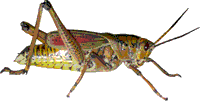Entomology Collections, Miscellaneous
Date of this Version
1988
Abstract
Light microscopy revealed cuticular plaques restricted to the abdomens of both sexes of four species of brachycerous flies: Tabanus nigrovittatus Macquart, Apiocera barri Cazier, Hydrophorus viridiflos (Walker), and Dolichopus consanguineus (Wheeler). Using SEM, these plaques proved glabrous and unsculptured. Only at high magnification did they show small pits. TEM of the plaques showed the cuticle in this region is traversed by numerous muscle attachment fibers which extend from just below the epicuticle to the base of the cuticle, where they connect to the microtubules of the tendinous epidermal cells. These fibers or tonofibrillae serve as the attachment sites for underlying muscles. In our study, however, no muscles were found in the older adults examined. Based on comprehensive examination of museum specimens and the presence of plaques only in the Nematocera and orthorrhaphous Brachycera, we suggest that these plaques were sites of attachment for muscles used by the pupa for abdominal movements that assist in locomotion and for muscle action that assists the pharate adult in rupturing the pupal case for eclosion. Following emergence, these muscles degenerate in a programmed cell death. Absence of the plaques in the Muscomorpha (Cyclorrhapha) is postulated to be a synapomorphy for this group of flies, correlated with their immobile pupa and different mode of emergence.


Comments
Published in Ann. Entomol. Soc. Am. 81(3): 503-510 (1988).